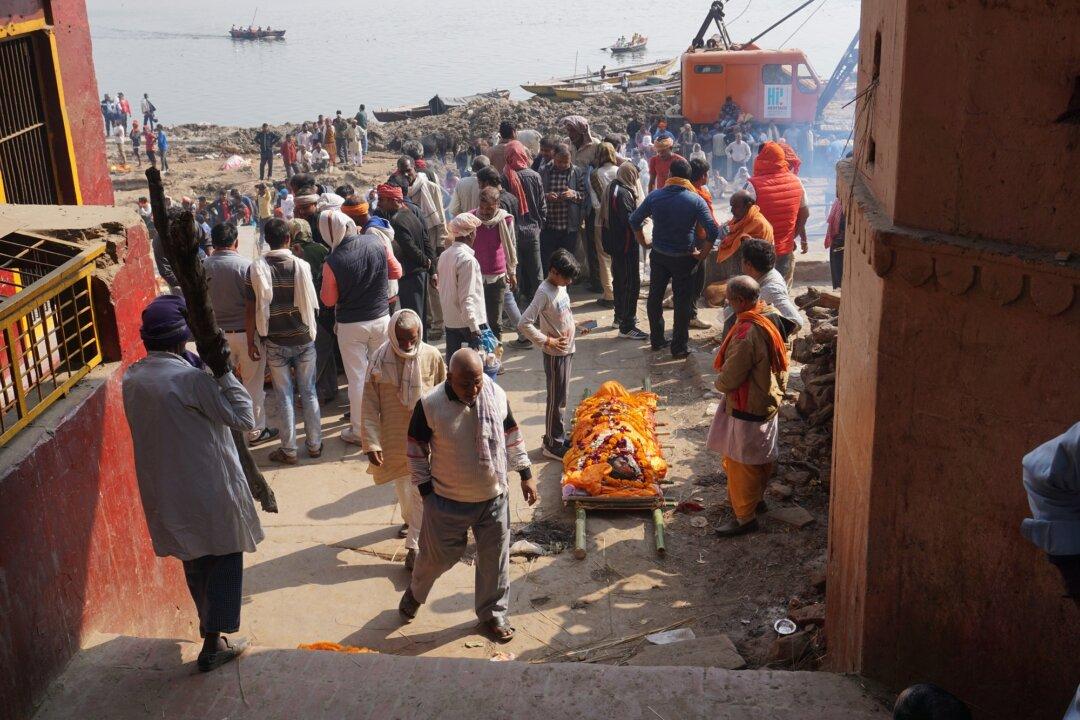VARANASI, India—Pyres burn 24 hours on the banks of the river Ganges in Kashi, a city where Indians have been coming to cremate the bodies of their loved ones for thousands of years because they believe it can liberate the soul of the departed.
As the pandemic struck India, Kashi (the name used by devout Hindus for Varanasi) saw fewer corpses reaching its shores, but the ones who came included those who died because of the virus. The arrival of those who had died from COVID-19 affected the cultural forms and the business of death. With lockdown restrictions easing, things in Kashi are returning to the ancient ways.





